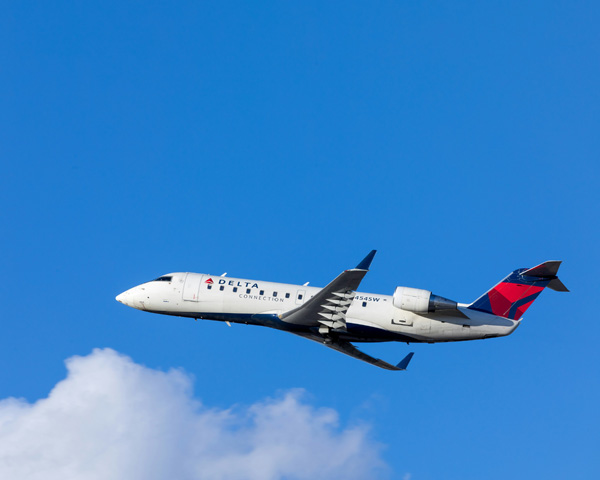Delta Airlines flight crashes in Toronto following a faulty landing

[A photo of a Delta Airlines flight. Photo Credit to Unsplash]
On February 17, 2025, Delta Airlines flight 4819 crash-landed at Toronto Pearson International Airport.
While the incident did not result in any fatalities, the plane was severely damaged and many were injured.
Following the accident, authorities are currently investigating the cause of the crash.
Flight 4819 was en route from Minneapolis to Toronto when difficulties during landing occurred.
When the plane touched down, its rear landing gears malfunctioned and came apart, subsequently causing the plane to flip upside down with the right wing being broken off during the process.
The plane then skidded down the runway as its main body caught on fire.
Emergency rescue workers successfully extinguished the flames and evacuated the 76 passengers and 4 crew members, though 21 of them sustained major injuries and required treatment.
Passenger statements described the crash as extremely chaotic, with many claiming to have heard explosions and the smell of jet fuel.
Others disclosed that they were suspended upside down in their seatbelts until the rescue crew were able to evacuate them.
When interviewed, passenger Nate Richie recounted his experience, describing the panic and fear inside the plane.
He stated, “There was a lot of screaming, loud noise from the wing that was ripped off and exploded. … You lose track of time but my immediate thoughts went to my wife, my children, my grandchildren, my mom.”
For their suffering, Delta Airlines has offered a $30,000 compensation to all passengers involved in the incident, with the payment not affecting any of their legal rights.
Yet, some victims have taken legal action against the company, with passenger Marthinus Lourens filing a lawsuit for $200,000 for his physical and emotional pain during and following the crash.
The aircraft responsible for the crash was a Bombardier CRJ900LR, a model that historically, has never been involved in a major incident that has resulted in fatalities.
However, like all aircrafts, it has experienced minor accidents that have been credited to operational mishaps rather than mechanical issues.
This suggests that this crash might also have been caused by human error, bad runway conditions, or other outside factors.
The Transportation Safety Board of Canada, U.S National Transportation Safety Board, and the Federal Aviation Administration are currently investigating the cause of the crash, while considering multiple factors such as aircraft condition, weather, and pilot error.
Reports indicated wind speeds exceeding 40 miles per hour during landing, as well as visibility limitations due to excessive snowfall.
Investigations revealed that co-pilot Kendal Swanson had received her qualifications only a year before the flight.
The co-pilot reportedly stated that she was not experienced enough to have operated a landing on a snowy runway.
As a result, investigators are questioning whether the co-pilot's inexperience contributed to the incident, while the state of the aircraft and the integrity of the runway are also being put into question.
Experts credit the lack of fatalities during the flight to the advancements of modern aviation engineering, with the plane having multiple safety features that allow passengers to withstand the impact of a crash.
The C.E.O of Delta Airlines has stated that the company is committed to the safety of the passengers, saying, “The hearts of the entire Delta family are with those affected by today’s incident.”
Despite the serious concerns that this crash raises about the safety measures of Delta Airlines, the company has not announced any operational changes.
Instead, they have been relying solely on investigators to uncover findings that will pinpoint the origin of the incident.
Fortunately, the airline has stated that they will review and act upon the findings made by investigators if changes to their planes or staff are necessary.

- Ian Kim / Grade 9 Session 1
- R.E. Mountain Secondary School

![THE HERALD STUDENT REPORTERS [US]](/assets/images/logo_student_us.png)
![THE HERALD STUDENT REPORTERS [Canada]](/assets/images/logo_student_ca.png)
